Art Apéritifs with Leslie B. Jones
An interview with the Director of Museum Affairs and Chief Curator for the Preservation Society of Newport County
8 December 2023, San Diego, California
In November I took a red eye to Boston, ahead of Thanksgiving with my in-laws, rented a car and drove the pleasant route from Boston to Newport, RI. Today, while putting the finishing touches on December’s Art Apéritifs, I find myself taking moments of repose to recall my time spent in the delightful, glittering town of Newport.
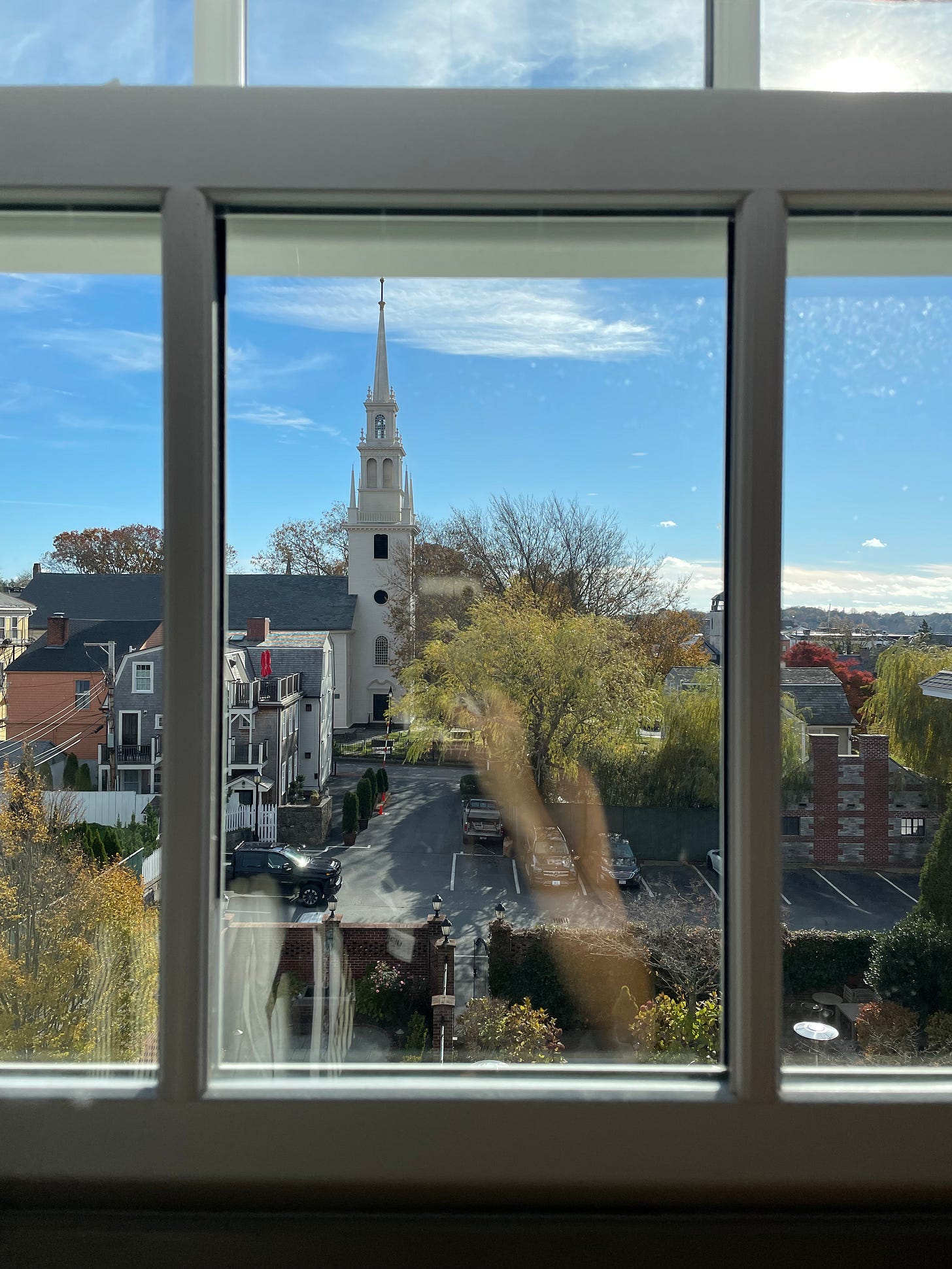
During these moments, I keep trying to pinpoint why Newport is so excellent - aside from the obvious: seaside, preserved, walkable with a sophistication that feels like the best of American society. There are other historic and quaint brick towns in New England which form adorable backdrops for strolling, lunching and a weekend away however Newport just has something. The fanciful side of my personality tells me it's the centuries of parties and balls thrown by 19th-century hostesses, so lavish and frivolous, a fashion required by Gilded Age high society, but that’s just the dreamer in me. While it would be lovely for life always to be a perfectly-planned-diadem-requiring-silk-dress exhibition, it’s simply not reality. The reality is life, in any town, whether it’s cute or not, is both the fabulous and boring, the good and bad - that’s just how life is.
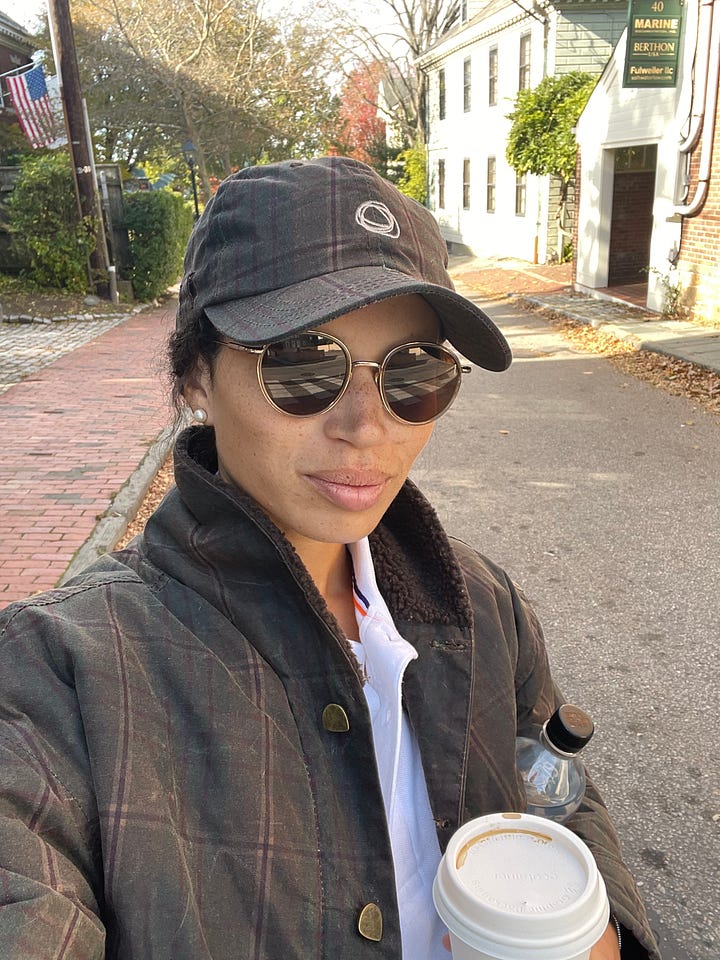
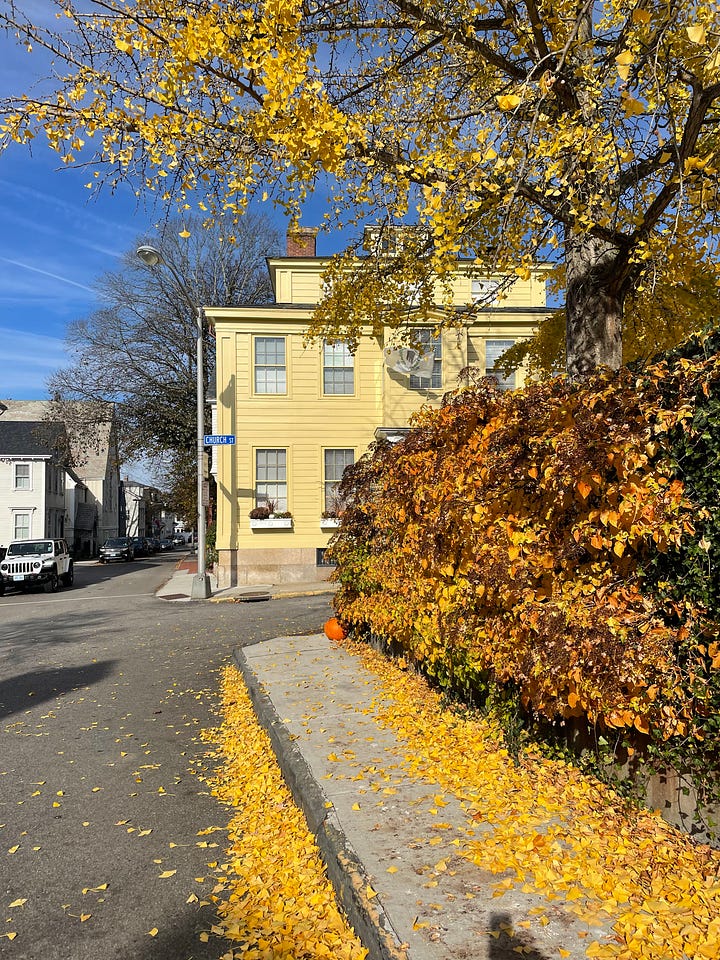
I had an aha moment yesterday when I realized the most engaging people, places and things are those that we humans feel we can relate to, and we relate most with people and to things and places that mirror what we’ve experienced, seen, thought, hoped for etc, something or a feeling we know.
The common sense side of my brain says that Newport is a place I love returning because it not only offers a glimpse of the gold gilded days of the Vanderbilts and Astors in the perfectly preserved Newport Mansions, but also presents a real life town experience. A town that has evolved through the decades, with people of all types and backgrounds rubbing elbows and making it work: in Newport, as with any town, it’s all about the people. While I was last in Newport, I had the pleasure of enjoying time with a completely special and interesting person: Leslie B. Jones, Director of Museum Affairs and Chief Curator at The Preservation Society of Newport.
15 November 2023, Newport, Rhode Island
This is a big moment, meeting with Leslie, who is charged through the organization to hold the responsibility for protecting, preserving and activating the 11 historic mansions plus landscapes in Newport, RI. Through several visits to their sites and after enjoying many tours, I have come to appreciate and respect this organization and what they do.
Leslie and I are meeting in the Library at The Vanderbilt Hotel, snuggled in the town of Newport, it’s a property with a wonderfully hygge set of rooms - I am staying here, lucky me.
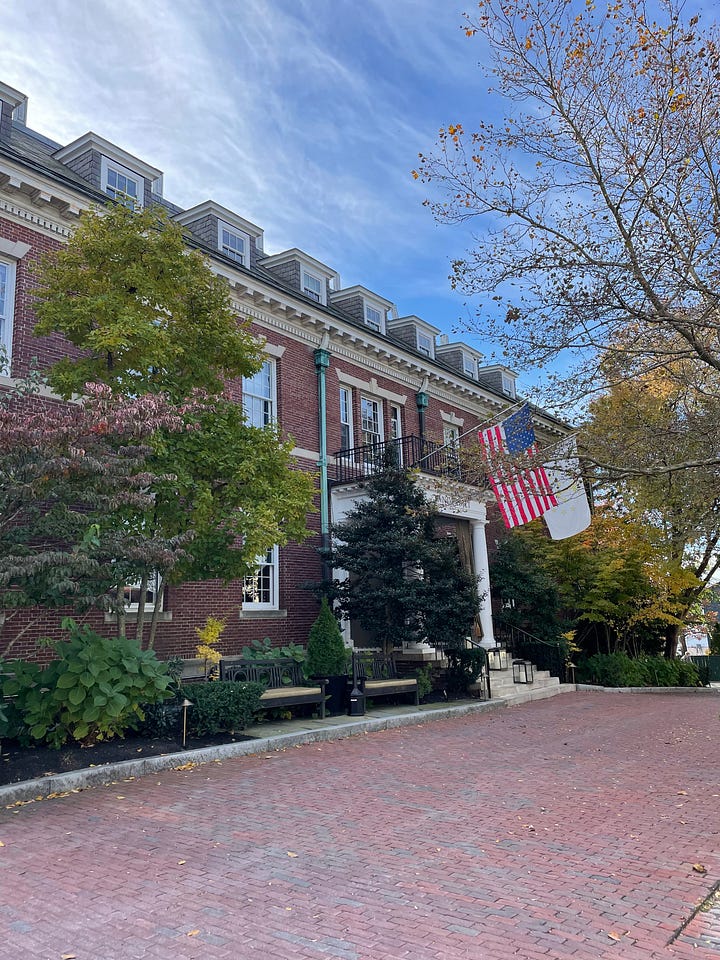
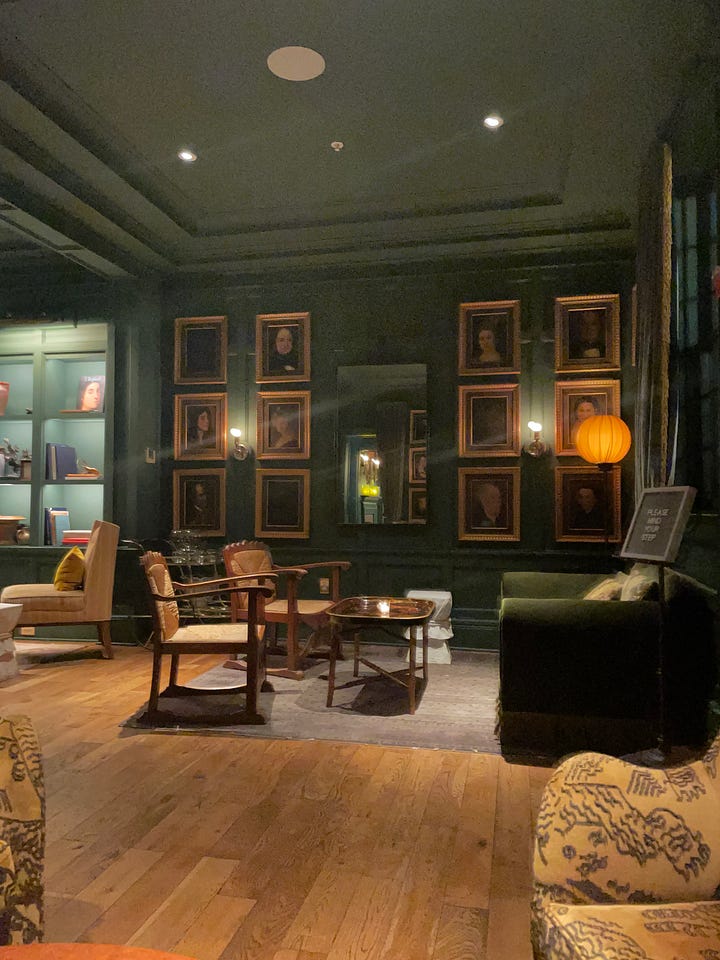
After introductions and get-to-know-ya-chat, we order: a spicy mezcal something for me and an espresso martini for Leslie. “That’s the mother in me,” says Leslie after placing her order to which I give a little laugh but inwardly bow in respect for working moms everywhere.
I press play on the voice memos app on my iPhone - bless you, Apple.
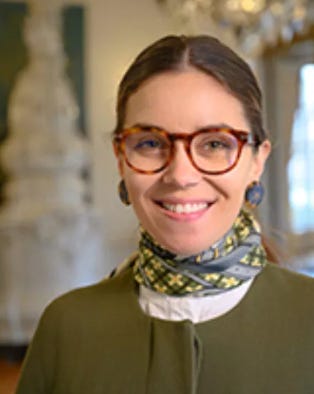
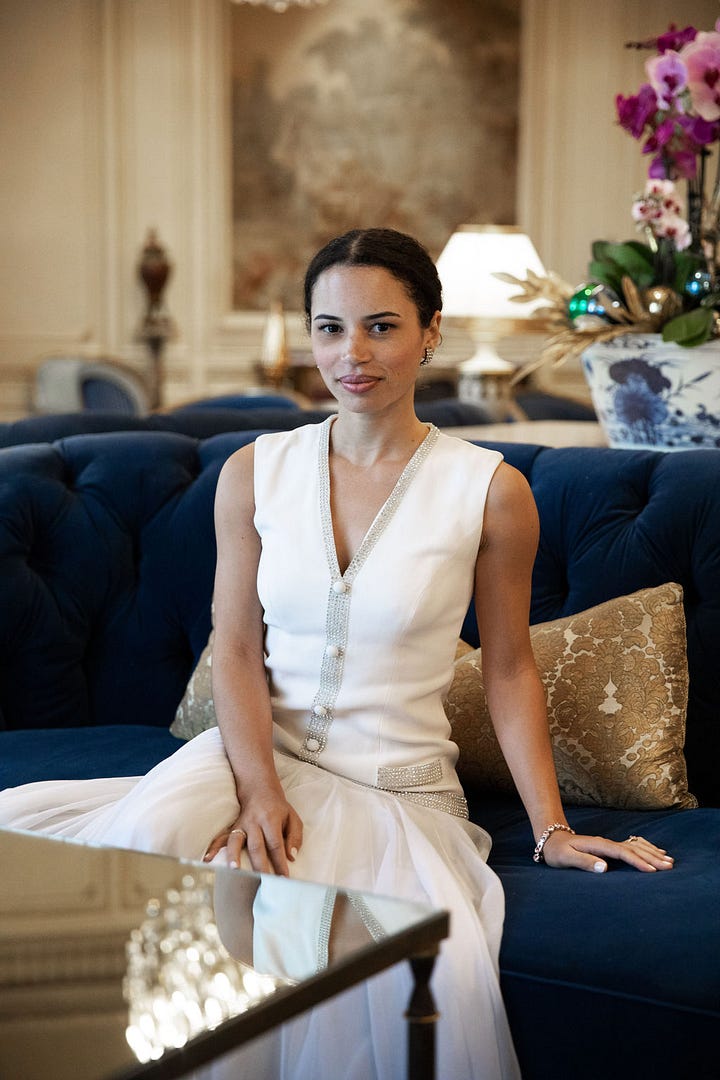
LLW: Leslie, thanks for taking the time to meet me and chatting Art Apéritifs. For our Readers, would you introduce yourself and share where you are from and what you currently do?
LBJ: My name is Leslie Jones, and I am the Director of Museum Affairs and Chief Curator for The Preservation Society of Newport County. In my role, I oversee the mission-driving operation of the institution through curatorial, collections management, conservation, and educational offerings that are all performed within the Museum Affairs department. I’m originally from St. Louis, Missouri, which in Newport you would then call me a “wash-a-shore.” I have been in this role for five years, but prior I held positions with the White House Historical Association in Washington, DC, Cheekwood Estate and Gardens in Nashville, the Powerhouse Museum in Sydney, Australia, as well as providing various historic sites curatorial, project management, and executive leadership through my consulting practice.
I received my BA in the history of art and architecture from Miami University in Ohio. My Masters is from the Smithsonian and Corcoran College of Art + Design in the history of decorative arts. I also completed an appraisal studies Masters Certificate program at New York University. Really, I’m always a student and I never stop learning.
LLW: Appreciate the background - this is going to be fun. As I have started this project and my non-museum friends are reading these articles, many of them are surprised curators are not wearing white gloves walking around a museum all day moving paintings.
LBJ: No…
LLW: And there is a whole team behind moving and caring for collections. A group of people working together, doing different roles, taking care of collections.
LBJ: Well the term ‘curate’ is oftentimes misused and recently has become convoluted.
LLW: The whole point of Art Apéritifs is to introduce our Readers to curators and share what it is you do, why it’s important and how it is you came to be doing that. Most people reading won’t know what it is to have worked in a museum or know exactly what a curator does, and your title is not only curator, but also Director of Museum Affairs. What does that mean?
LBJ: It essentially is…it’s understanding and managing all of the collections based activities for an institution. My department oversees Curatorial, Collections Management, Conservation and Education.
LLW: Wow. But not Visitor Experience?
LBJ: Visitor Experience bridges together with our Curatorial and Education teams to build tours. Our Visitor Experience is more about the logistical experience: car to car, getting your ticket, how you are ‘fed’ your tour and then proceeding through the house1.
LLW: Got it.
LBJ: Subtly, we also train all the preventative conservation work that happens through our Site Stewards, which is hugely important.
[At this moment, Logan, from the Vanderbilt F&B team interrupts but that’s cool he’s quite nice.]
LLW: It’s interesting, so your umbrella oversees all of the operations from a museum, education and experience perspective, plus the collections and then..
LBJ: Curatorial. Curatorial for our historic house organization is researching collections. Researching social history, researching architectural history and threading together a tapestry of what life was like in a lived experience through objects and spaces. We have in the past tried to identify periods of significance to keep these houses in a narrative format, so [the experience of visiting] is not terribly complicated from the public’s perspective, and what we’re learning is we can have one tour that does that but we can also have multiple tours that offer multiple perspectives.
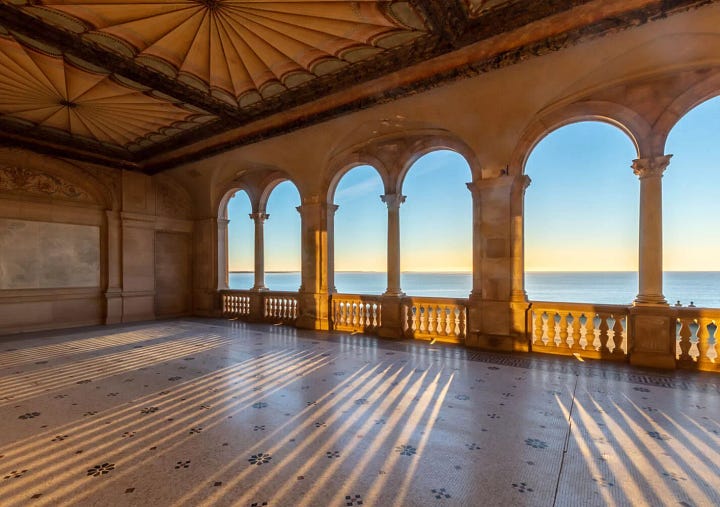
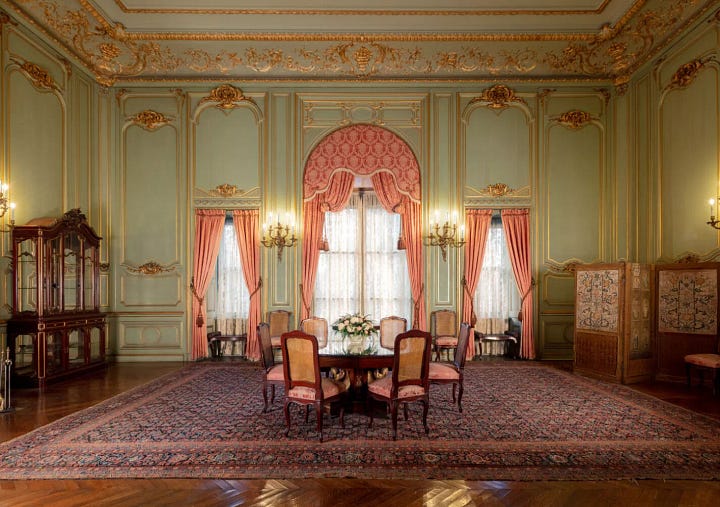
LLW: And you all do an excellent job of that. I've really enjoyed plugging into different time periods while touring the various Mansions…we will talk about the Gilded Age in a bit.
[Logan returns, this time with our cocktails]
LLW: I am really curious to know your thoughts on activating objects vs. spaces. In a traditional museum, we visit and, generally, are concerned with looking at and getting to know the objects on the walls, the objects displayed, rather than the space or building. Whereas your team really has to think about both objects and spaces.
LBJ: About 8 years ago, prior to my coming here, the second floor of Rosecliff2 was converted from bedroom spaces into gallery spaces.
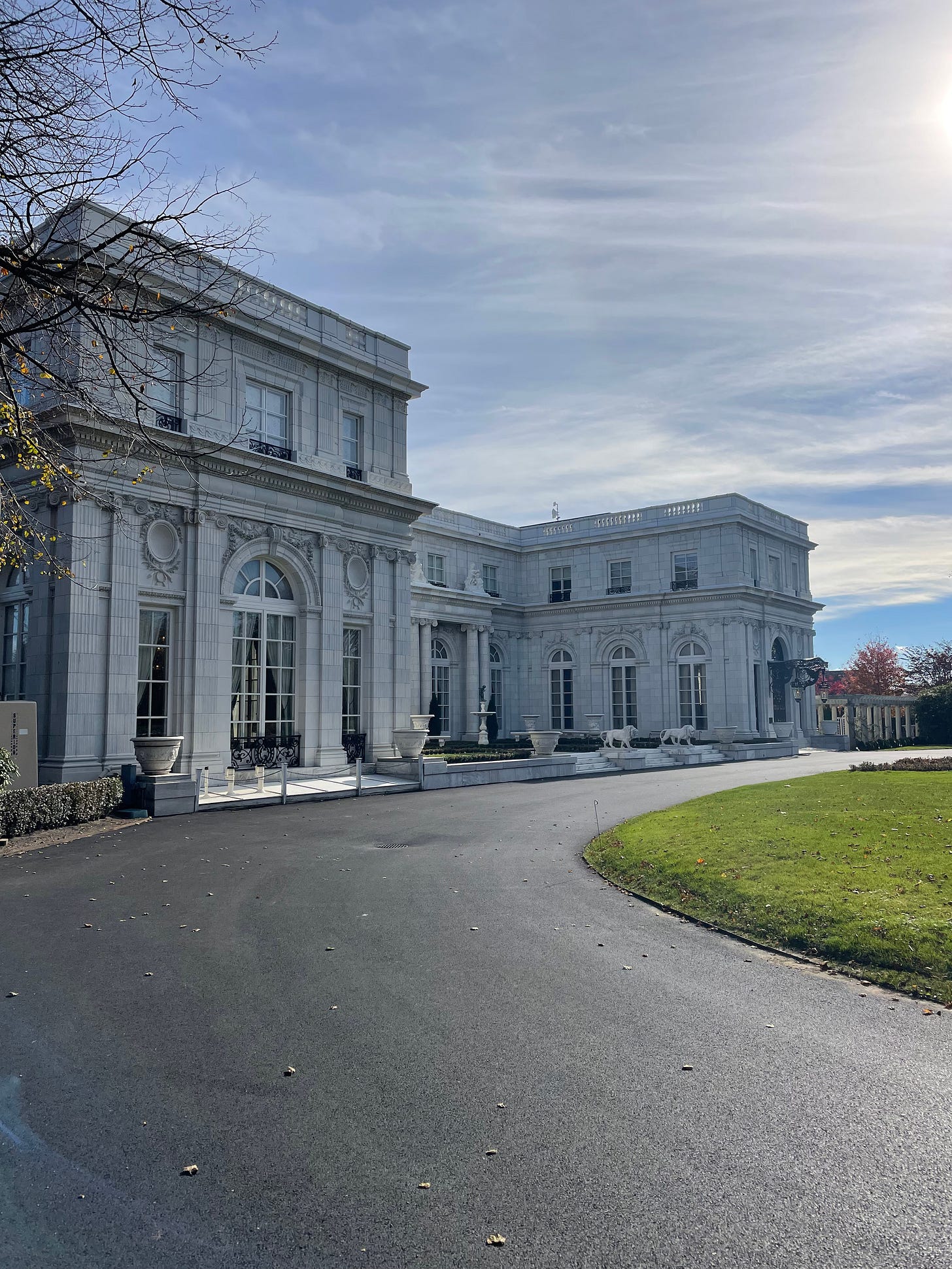
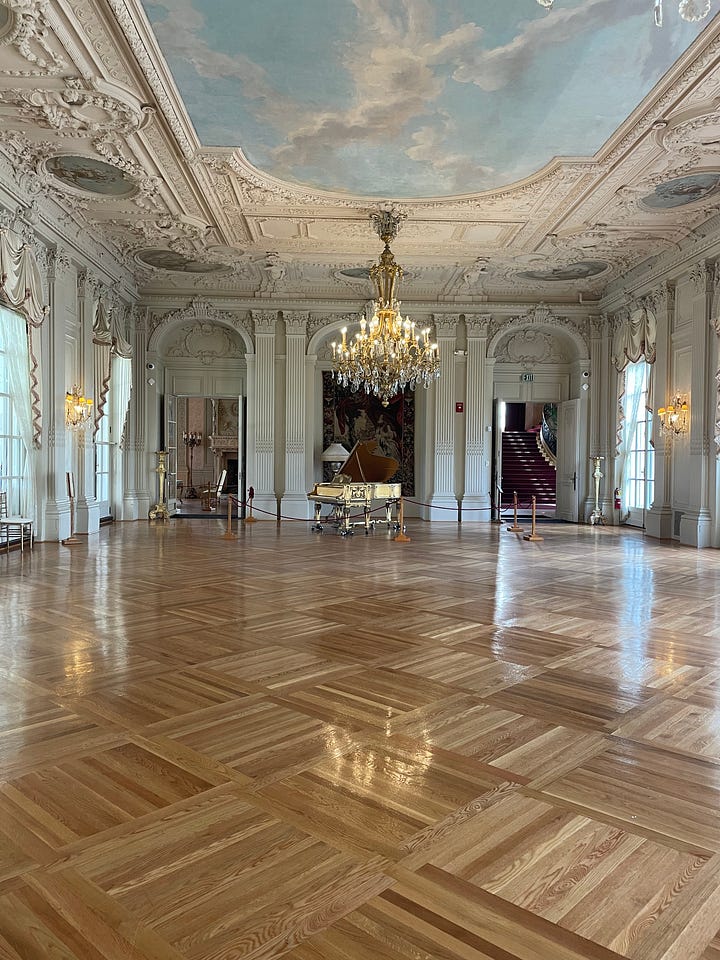
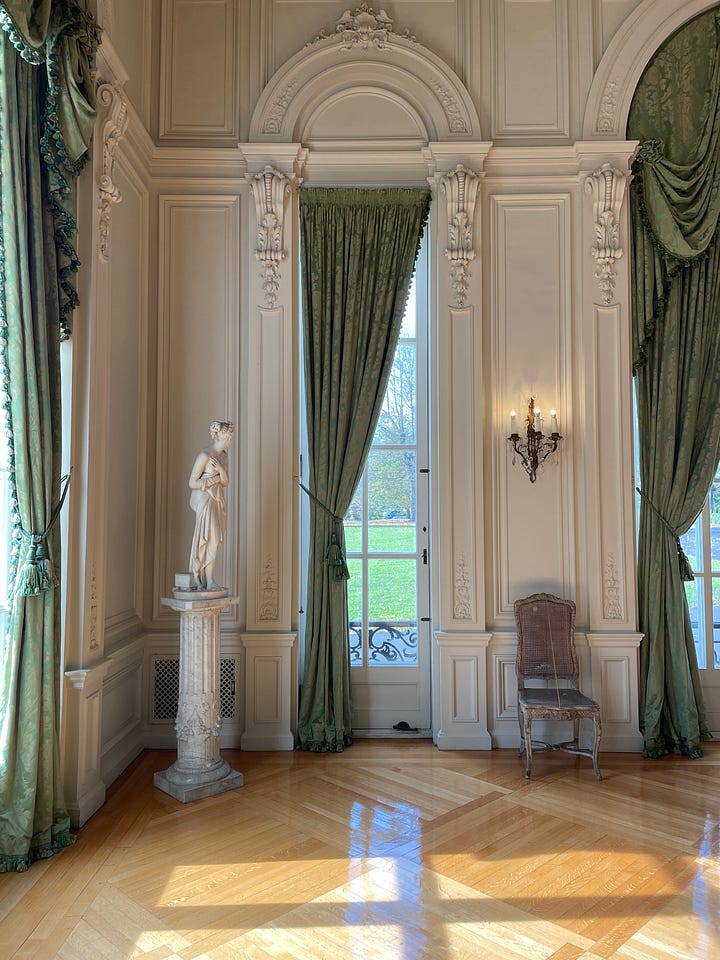
LLW: I was up there today.
LBJ: Yes, we really need to take objects out of context so you can see them for what they are, appreciate them for what they are, and then also understand that all these stories and sites tie together in an intricacy of social webs. It is not a house that is on an island unto itself…it is a network. From the patron of the house, from a collector and social perspective, but also the networks of servants, designers, purveyors, local businesses…
LLW: This one house is like a city. It’s a town.
LBJ: Essentially. It’s what Julian Fellowes3 likes to call, ‘a village of palaces.’ We are trying to understand how that village works, which we have not focused on in the past [rather] it’s more been isolated research, like Cornelius Vanderbilt and his wife and the things that are in their house.
LLW: Speaking of Julian Fellowes, we need to get into his new show with HBO, The Gilded Age, much of which is filmed across the Newport Mansions. But more on that later…
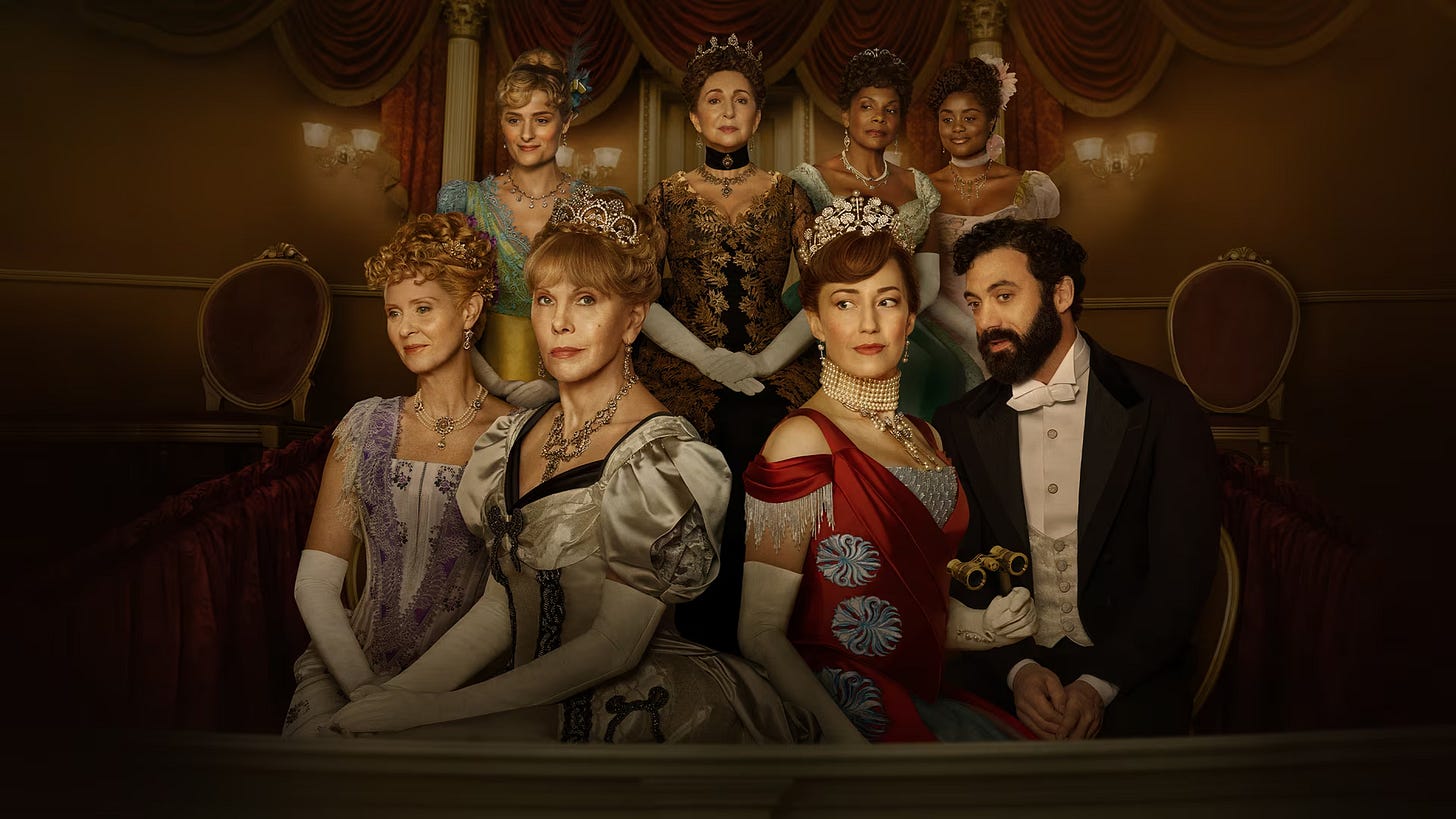
LBJ: [Leslie laughs knowingly] Today we are working very diligently through building our Curatorial team and our Research Fellows program to really tease our specific stories and then offering visitors the opportunity to have the General tour, Vanderbilt Tour, Servant Tour, Richard Morris Hunt Tour. So you can see each house is a prism.
LLW: Totally, it’s important to be able to dig into a specific theme but also understand that these houses formed a community and had a society…I visited Rosecliff today, and as I was walking back down Bellevue4 and I kept thinking of the world of Newport, and all that I have learned but still don’t know about how these people lived and worked - there is so much potential in the experiences your team can create here. I am excited to see how you dig in deeper.
LBJ: And we’re just cracking that shell. It’s what makes being here so exciting along with shifting our goal in growing our reputation as a world-class museum. We have truly incredible objects in our collection, but there is a lack of research from an art historical lens, they have been researched from a social history lens. Such as, for example, a Jules Allard5 cabinet. Allard did all of the interior design for Rosecliff, The Elms and Marble House.
LLW: Incredible.
LBJ: But who was Allard?
LLW: Valid.
LBJ: So we have spent and dedicated 2 years now, and will be continuing probably for the next 5 - 6 years, understanding who he was, what his manufactory was like in Paris, his network as it grew, the fall of his empire. We have an intern in Paris right now, actually, we have had him there for 5 months - he’s Paris based - combing through all of the archives and libraries trying to suss out: who was Jules Allard?
LLW: The interesting thing about the Newport Mansions…
[Enter Bill Tavares, Communications Manager at Newport Mansions, stopping in to say hello on the way to his daughter’s birthday dinner. A delightful surprise. It’s always about people]
LBJ: Thanks, Bill! We spent a lot of time together, we had a PBS interview this morning.
LLW: Of course! Masterpiece Theatre. Has Laura Linney stopped by for a tour yet?
LBJ: [Laughs]
LLW: What I was saying was you all have a very interesting, and difficult, hurdle to jump over in that your collection is from all over. In some museums there might be a collection of all British portraits, whereas your team is researching objects and works of art that have come from around the world and may all be from different artists. To give our Readers a sense of scale, how many mansions are under the Preservation Society’s care? And how many are on your team?
LBJ: It’s 11 properties. But not all the buildings are included in those properties, but 11 historic properties, and my team is 14 full time permanent, 4 full time seasonal, 3 part time individual and 4 research fellows.
LLW: That’s a lot of properties. But, your team size, that’s awesome.
LBJ: It has been a subtle goal for me to add to our staff, each year, from a budgetary perspective, to demonstrate the need because if we want to grow our profile we have to grow our academic output and it has to be at the highest level of best practices.
LLW: And there are so many opportunities for research. For instance, today, as I was walking around I couldn’t help but think about Chateau-sur-Mer, it’s closed but I could go on a self guided walking tour of the grounds or listen to an audio tour. It’s great to hear your team has a number of Research Fellows - I imagine with all of their niche areas of study and interest they will be able to dive into a lot of your collection.
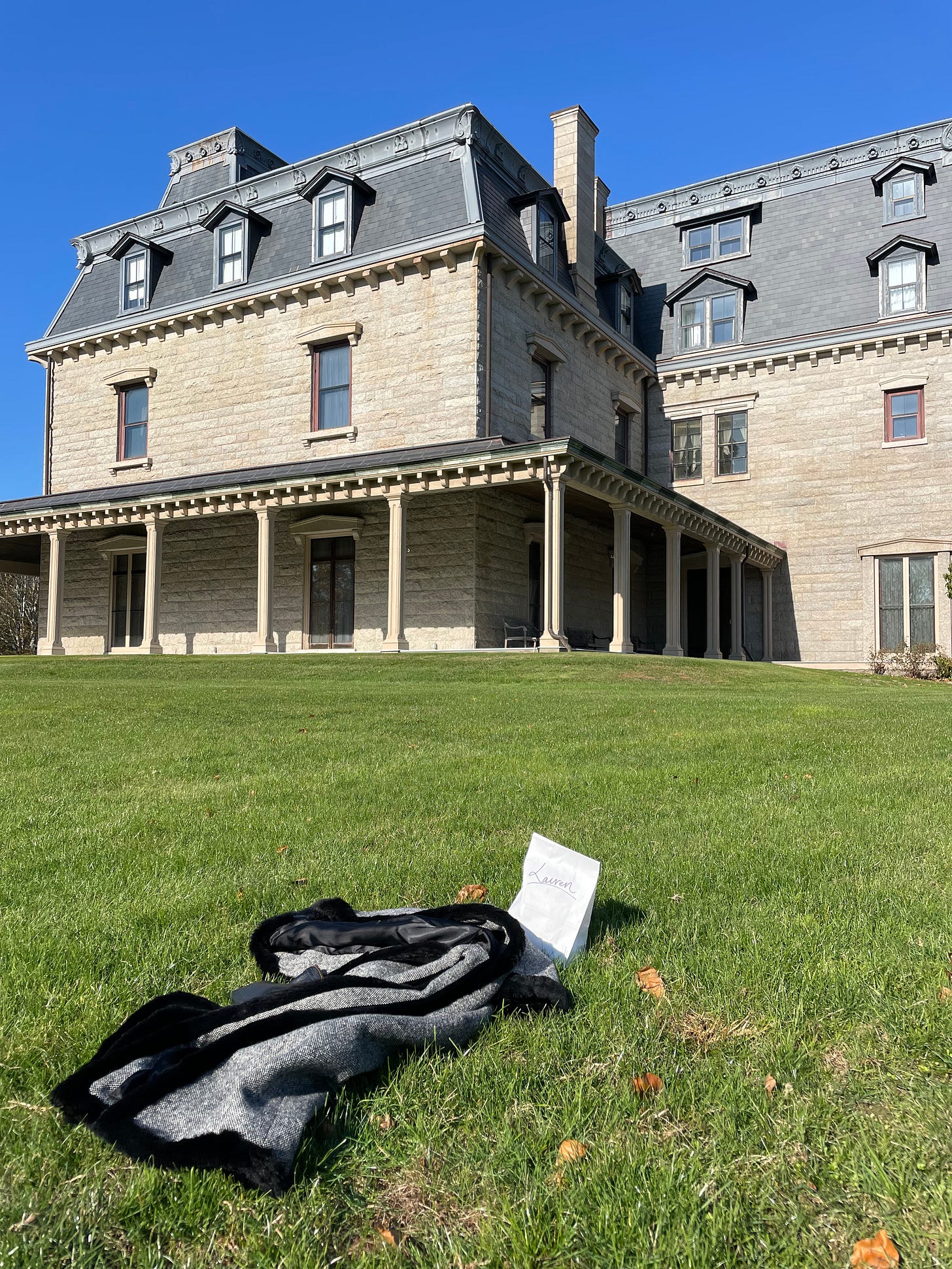
LBJ: We hand-select what the [research] subjects are going to be…there’s always a Conservation Fellow, because we are trying to also advance the study of the field [of conservation] and try to offer those fellowships to young emerging scholars to give them a slow entry into the world of historic house museums and museums in general. Fellows are given the luxury of focusing on one project but ample opportunities to participate on other things, they’re called on to volunteer for our various programs, like our holiday decoration scheme. It’s important to understand working in a museum is not a solo profession, you’re not able to sift through the library stacks all day to research for an exhibition, you’re multitasking, constantly.
LLW: It’s interesting you say that. That bit comes out in every Art Apéritifs conversation. A couple of days ago I was in San Diego with Derrick Cartwright of the Timken Museum of Art, and he mentioned something similar: that he always thinks back to his early jobs learning about the teamwork required to make a museum tick, and that the front line staff have some of the most cumbersome jobs within the museum.
LBJ: It’s absolutely true. We not only have to make the visual experience interesting but also ensure the people are taken care of.
LLW: Totally.
LBJ: Particularly when…there is a different type of visitor to a historic house museum. They’re looking for that sense of hospitality, they want to see what it was like, they want to feel like they can experience it. It’s hard to pin point because it goes against all that we’re seeing in a cultural shift, with respect to showcasing broader narratives…there is no break in our visitorship. We’re taking the responsibility of shifting the dialog while they’re here. If they are going to come anyways, let’s give them something they’re going to take away that might make a meaningful impact in their lives and the communities they’re going back to.
LLW: Is an example of this the Upstairs, Downstairs tour and other different types of tours you’re offering?
LBJ: And the exhibitions we are putting together now. We owe it to, and it is our utmost responsibility to convey truth and fact to the public. We take that responsibility very seriously. We are not in the business of opining on history.
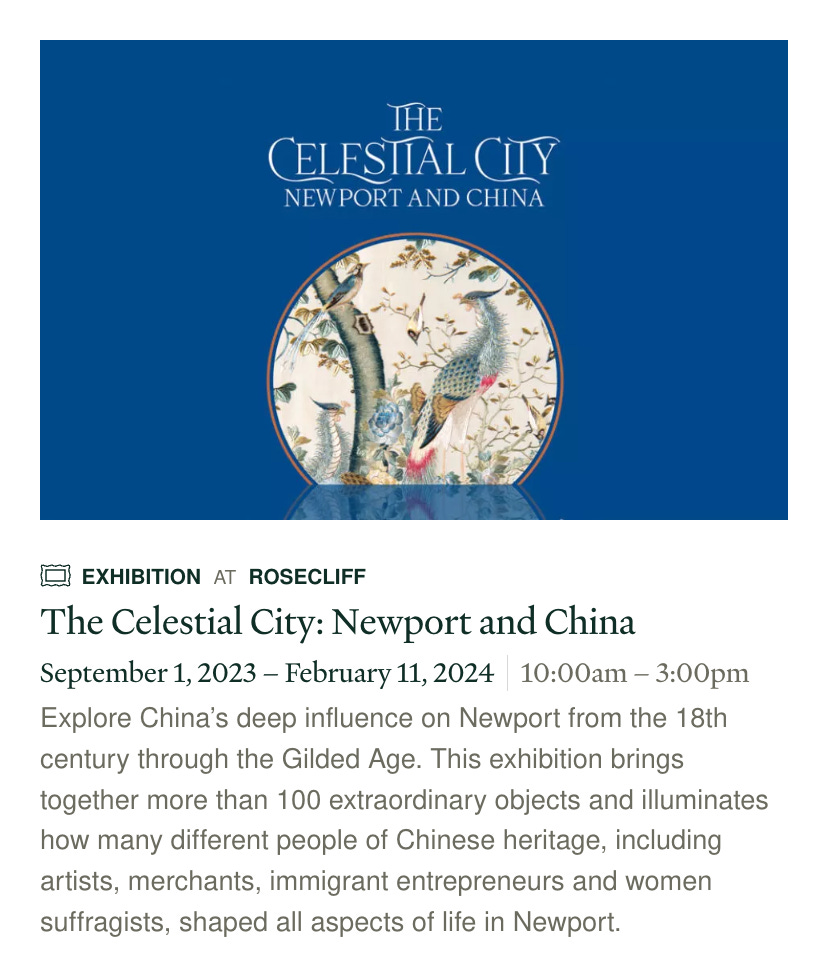
LLW: And that might happen, I imagine, with historic houses, because visitors have an obvious interest in the people who lived there, and sometimes we can put our own fanciful spin on history to make it more entertaining.
LBJ: And on the flip side, when we are approaching properties like Hunter House6, and ideas about enslaved people and the basis for why Newport was an incredibly important Colonial port because it was a place of trade, including enslaved individuals.
LLW: And that context, understanding that plus the Gilded Age that came later, post Civil War, is so important. We need context to understand objects, works of art, historical houses etc.
LBJ: I took this job because of Hunter House. Looking at the Hunter House tour and the information that was available online and how it was just about the Hunters7, the Wantons8 and the Nichols9 families that lived there, and [I kept thinking] there is so much more to this story.
LLW: It seems cumbersome to juggle tradition and contemporary reality.
LBJ: My role in Nashville at Cheekwood10 was a balancing act of bringing forth family histories that they may not have wanted to necessarily discuss.
LLW: Oh Wow. That’s intense, particularly in the South.
LBJ: Well the interesting thing is that the descendants of the Cheeks are very erudite and widespread in terms of where they live and they are of the world. They understand their predecessors and ancestors may not have been the most exemplary people. In sharing with them the goal of the restoration of the House and bringing history back to it, we worked together with the goal of understanding everything possible and placing it in a context where people can understand that these are actual human beings making decisions. They’re not characters, they’re not cast. They’re real people with real emotions with loss, tragedy and excitement. [These historical figures] may have had a bad day and that ends up being a newspaper article that lasts for 3 weeks, and that’s what I have as research material - those are my primary sources.
LLW: And they didn’t have Instagram or X to dictate to which may have given another perspective…
LBJ: Or they destroyed everything [like letters and diaries] because that may have been the tradition in some families.
LLW: Yeah.
LBJ: Lark Mason, one of my great mentors and friends. He’s on Antiques Roadshow, he’s an Asian art specialist and he was my professor at NYU in my Appraisal Studies Program. He has been one of my greatest champions throughout my career, and bringing him to both Cheekwood and the Preservation Society as part of our Collections Committee and he is now part of our Board. We’re developing people on our Board and on our Committees who have both a deep rooted connection with Newport as well as museum experience, complex museum experience who understand the arts field from a variety of perspectives. That is important to me because we exist in a complicated arts field.
LLW: You really do. It’s not only somewhat far, seemingly, away. But you’re also a campus, similar to a Smithsonian, and you all have to work together, provide the excellent experience while taking care of these properties and providing context to your visitors.
LBJ: And it is still one of our greatest challenges to help create identities for each of these houses. I would say, even as a young graduate student, I remember going down Bellevue Avenue and I couldn’t tell the difference between Marble House, Rosecliff and The Elms - they’re all big white houses. Who lived there? And why should we care?
LLW: Yeah…
LBJ: Marble House, a little bit easier [to recognize] because of the Vanderbilts11, I had never heard of the Olerichses before–it’s actually Tessie Fair Oelrichs12 [who lived at Rosecliff]--and the Berwinds [of The Elms], built one of our greatest masterpieces of architecture but most don’t know who the Berwinds are…
LLW: But I love The Elms.
LBJ: The Elms also has, from a modern perspective, one of the most complex and real histories. It is all about coal. So we are working on ways to understand how we can talk about the introduction and the manifestation of coal as an entity: what it meant to and why it was important for progress in that era but it has resulted in, and acknowledging the fact that, it impacted the climate in devastating ways.
LLW: Yeah.
LBJ: Which was also acknowledged then, but the longevity of effects were not understood.
LLW: And also, now, people can understand the impact something like coal had for progress and the environment, but we can’t truly understand how valuable coal was as we don’t rely on it. That’s another piece of all of this…it’s another difficulty in your world. How do you help visitors, as contemporary people, to understand all of this history in context? Another example is like, why do these Newport hostesses have to have all these balls? It is difficult for us, today, to understand why hosting lavish balls was so necessary for their lives [and society].
LBJ: Well, and in some ways, The Gilded Age series gets this right.
LLW: What do you think about it? Do you watch? I love Julian Fellowes - huge Downton fan.
LBJ: Yes, I do. Our team tracks where our properties are featured in each episode and then we create behind the scenes stories [on social media].
LLW: I watch and do enjoy it, I am liking season 2 more than the first season. I feel like the characters have more, I don’t know - humanness. Have you ever watched Dr. Thorne?
LBJ: No, I haven’t. Is it an American story? Or English?
LLW: Yes, it’s a mini series from Fellowes on Amazon Prime so it doesn’t get as much hype but it is excellent. Highly recommend. [I digress]
LBJ: Fellowes is so good. He invested a lot of time [in the show] setting the stage for all of these Gilded Age characters…[which is important] because these homes were not households unto themselves
LLW: Have you experienced a big uptick in visitors because of the show?
LBJ: It has been an interesting trend to watch, last year we created a Gilded Age Tour and most people who signed up for that tour had never seen the show.
LLW: Oh, really?
LBJ: The idea of the Gilded Age is still sort of this…it feels like a fantasy world to the general public.
LLW: Because they don’t think Americans had this type of society?
LBJ: Well, they might not know about the time in history. It is actually quite long and incredibly significant, but is not something that we, generally, in our civics and historical education in most schools focus on post Civil War reconstruction, Spanish American War, McKinley gets shot and then we are in the flapper era.
LLW: That’s so true…even if you study Mark Twain, you don’t think about the Gilded Age.
LBJ: Educating people on the Gilded Age and why it was so important… It's also part of our ultimate goal, and our CEO speaks to this so eloquently.
LLW: Is that Trudy Coxe?
LBJ: Yes!
LLW: My mom’s name is Trudie, I have an affinity for her already! [Again, I digress]
LBJ: [laughs] People, in general, think the Gilded Age is spelled, ‘guilded’ or it's the ‘gilted’ age, and are thinking, “I don’t even know what gilding means.”
So in Mark Twain’s titling his book13 that way, he sets the stage for what future scholars in the 1920’s, 30’s and 40’s end up referring to that period as. They are not calling themselves ‘the Gilded Age’ during that period.
LLW: Totally.
LBJ: It’s about the disparaging society and the polarization of the really rich and really poor. Which we still live in now.
LLW: Oh, totally.
LBJ: Capitalism’s manifestation is during this time period…It’s complex from a curatorial perspective and developing these narratives, we are well aware that people are coming [to visit the Newport Mansions] for escapism. But at the same time we need to give them factual understanding about the period. It is a balancing act for us. While never falsifying or opining on what may have taken place but helping people to understand that the world we live in now was formulated then.
LLW: Yeah.
LBJ: That was a major shift in how our society, economy, politics, journalism, globalism - it all began during that period.
LLW: It’s evident you are committed to and passionate about what you do, the challenge and magic of it all. When did you know or decide you wanted to be an Art Historian? That you wanted to be in this world?
LBJ: I remember going to the Bursar’s office when I was preparing to go to college at Miami - I had just enrolled. I was talking with my parents on the way to campus, and I said, “I think I want to be a photojournalist. I want to document the world and use art as a vehicle to do that.”
LLW: Ooh.
LBJ: And then, I sat in on a couple classes when I was visiting one week and I remember hearing someone talking about how you could look at a painting and tell so much more about what was happening in the world at that time…it was more than a still life or a guy playing a flute with fruit in a basket behind him. It gave me a sense that there is so much more out there than what you can read in a book or immediately view in a picture. [Leslie pauses, thoughtfully]
So I pursued art history, which included architectural history, and in my senior capstone I drew art and architecture together with furniture.
LLW: Oooh!
LBJ: And furniture is what I just dove into…the Garvan Carver14 in the Yale Collection at the Philadelphia Museum of Art.
LLW: PMA has some amazing furniture.
LBJ: It’s incredible. Alexandra Kirtley15 there has been a wonderful resource for me…[Furniture is interesting] because the fact that this person doesn’t have a name but their work is so well known because somebody collected his pieces. [Furniture makers] are sculptors, but furniture is functional…it’s the architecting of objects that you use in your everyday life but have artistic quality - I had never looked at the world that way before. So I started looking at graduate programs.
LLW: Wow
LBJ: And then there was no turning back
LLW: For those reading who might be considering a career in the cultural sector, any advice?
LBJ: I got into this whole world based on putting myself out there and seeking out help, and I give help whenever it’s asked for…
LLW: I really appreciated your being open to this meeting. Number 1, you met me with fervor, and it excited me!
LBJ: Yeah!
LLW: In my experience, you ask people and most times they are willing to share with you. A rising tide lifts all boats.
LBJ: Truly.
LLW: I love this question, I’ve asked every Art Apéritifs guest this: What are you currently obsessed with? What is haunting you at night? What can’t you not stop thinking about?
LBJ: Honestly. It’s Jules Allard.
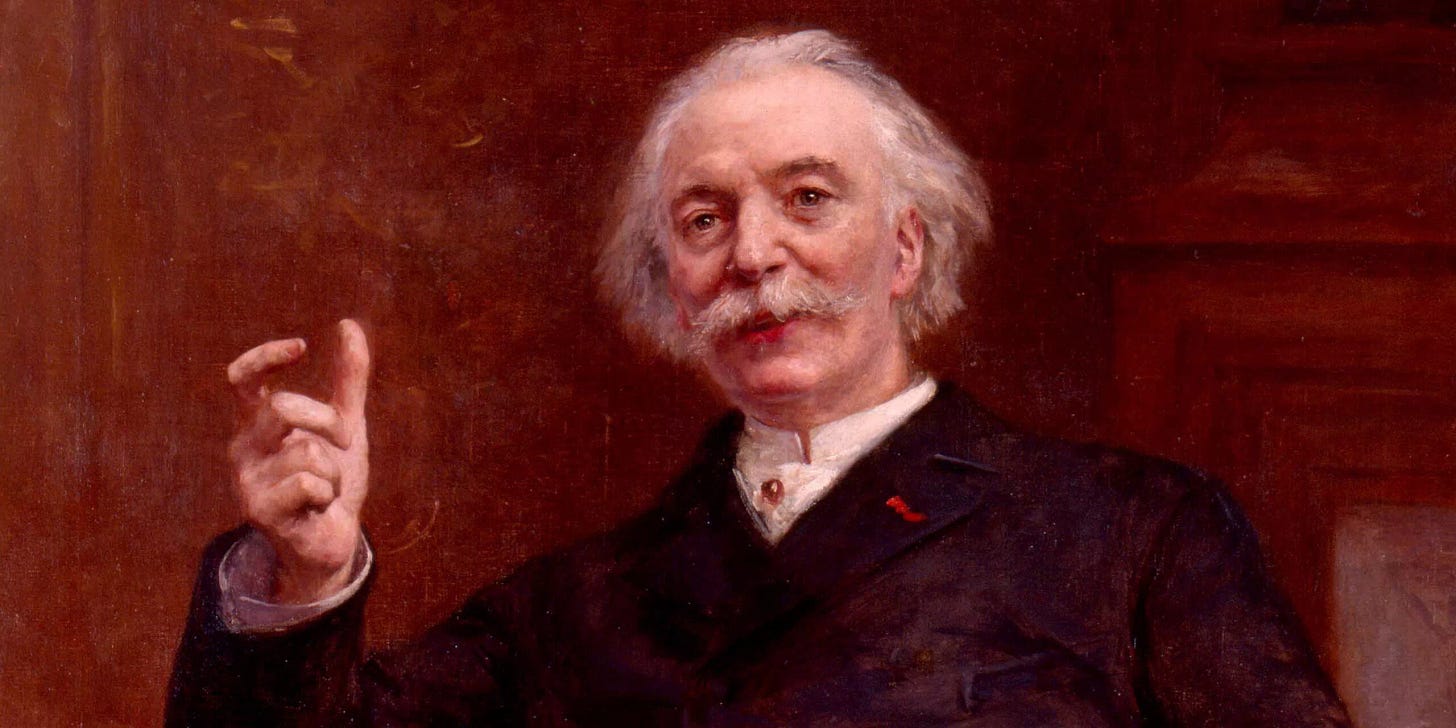
LLW: Ahh.
LBJ: He visits me in my dreams. In addition to our Paris intern we have a Research Fellow who is also focusing on cataloging all of his furniture in our collection, so we can understand: what is the Allard style?
LLW: How cool.
LBJ: And what we are kind of finding out is that, there isn’t one! But he is this enterprising, entrepreneurial, artistic genius who everyone, with the exception of our Curator Emeritus, Paul Miller who started this whole project and process, has overlooked for too long. Allard revolutionized the way we understand the Gilded Age because we enter these houses and you see these completed spaces and once you start peeling back the layers of the onion, you realize these people were not great collectors, they were acquirers, and they hired someone to finish a house, completely, and in the case of The Breakers within 2 years, full furnished but historically based to give the appearance of generations of collecting.
LLW: God, that is crazy. When you put it like that - it’s insane.
LBJ: It’s a fascinating facet of this entire era, and Allard was the mastermind behind most of it, at least in Newport and New York…He is my obsession and will be for a while.
LLW: I can see why. I’m excited to go down a rabbit hole on him,
LBJ: You won’t find much! [Yet].
LLW: Lastly, what is your favorite museum? Or museums? Or perhaps you don’t have one?
LBJ: I would say I have 2. For a professional perspective, I would say The Frick.
LLW: Ugh I love The Frick. Makes sense for your world as well.
LBJ: Yeah…but for personal solitude: The Isabella Stewart Gardner. It is a refuge. It is an escape. And it’s an inspiration. The Frick feels the same way in that it’s the same time period I focus on here but this dynamic individual and collector [in Henry Clay Frick], artists, artisans, designers, decorators, their Chief Curator, Xavier Salomon, has done, truly, an incredible job. Likewise with their Executive Director, Ian Wardropper. I admire both of them so much.
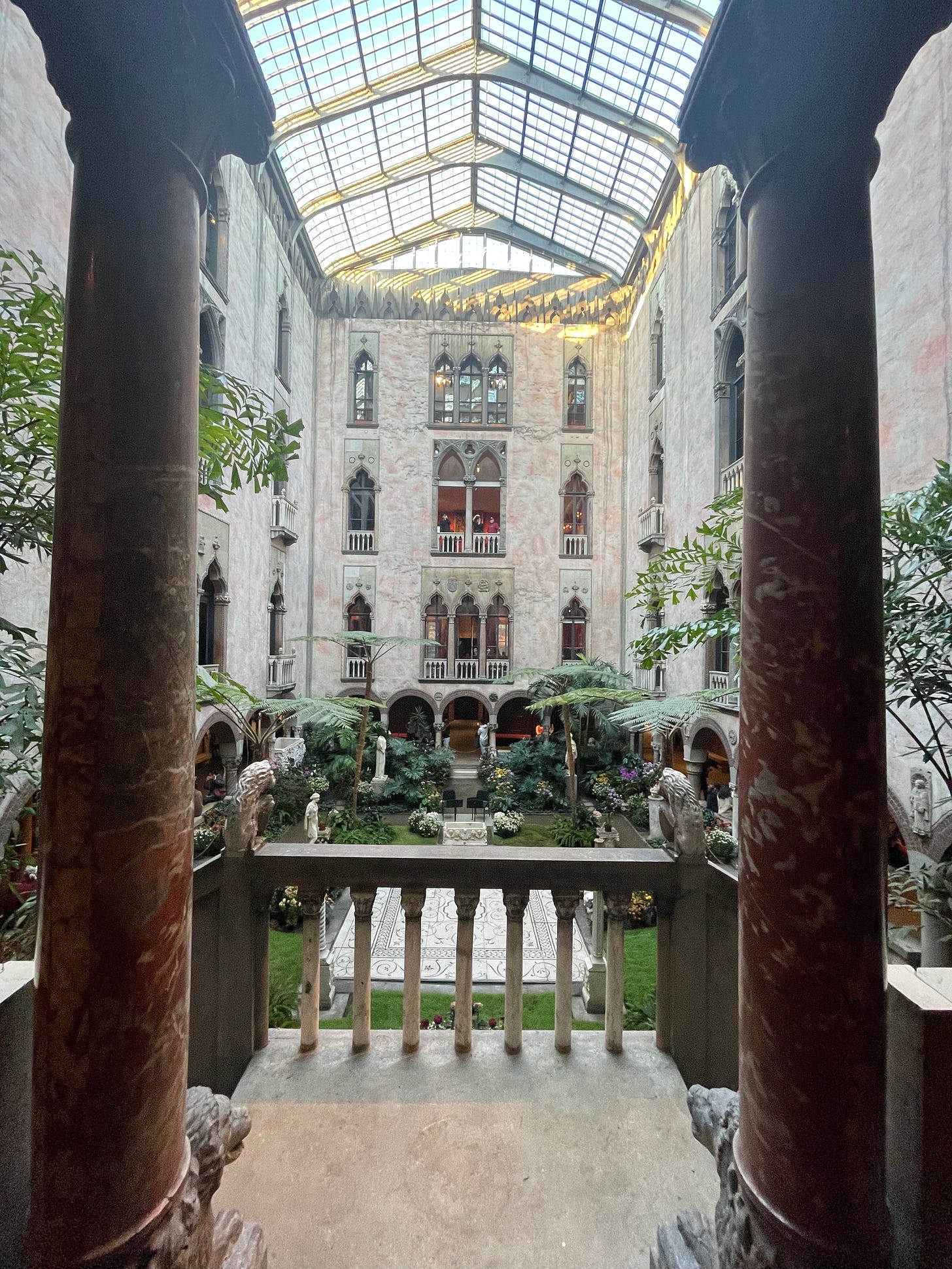
LLW: The Frick is glorious. It’s so…
LBJ: And what they did with the Frick Madison!
LLW: I am really excited for this next chapter at The Frick. Re. the Gardner, it has an effect on people.
LBJ: When I think of the Gardner, I focus more on the building as a personality. The collection as a personality.
LLW: When you go there, what do you gravitate towards first?
LBJ: It’s always different. I let the building take me. I always start in the Atrium. I admire it. I remember Venice, smell it in Boston [laughs] and then I just, sort of, wander. Like the Morgan, they have done a beautiful job in adding a contemporary building onto a historical structure and modernizing the way they educate, attract and activate their audiences. It’s an inspiration for me.
LLW: It’s interesting, your tone of voice changes when you talk about the Gardner.
LBJ: Yeah, I relax.
LLW: Amazing. Actual last question as I must ask, do you have a favorite Newport Mansion?
LBJ: Hmm. Today? As I have gotten to know each of them, as sort of personalities, I am always in a relationship with Alva Vanderbilt16 at Marble House.
LLW: She’s a strong character.
LBJ: She is. But I am also quite fascinated, most recently, with Kingscote17.
LLW: Yeah?
LBJ: Yeah. The Jones family who built it. The King family who kept it. It is generations of incredible narratives, international intrigue, a really interesting collection…It’s Richard Upjohn18, McKim, Meade and White19 - the meeting of 19th century minds and this family that has such an important part of the globalism of our world today, but are totally forgotten about.
LLW: And they have the smallest, or let’s be real none of these houses are ‘small’, let’s say one of the lesser known houses on the block.
LBJ: But interestingly in the period of the Gilded Age, in particular, they’re the gatekeepers of Bellevue Avenue. They are the old guard that the new guard has to pass through…
LLW: They’re the knickerbocker energy, right?
LBJ: Yeah, and we have not looked at them in these various ways in the past so I am looking forward to bringing some of these [human] stories to the surface. I often say, recently, I came for Hunter House, I stay for Kingscote.
LBJ: It’s a wild world to be in, but I wouldn’t be anywhere else.
LLW: You seem to be in precisely the right spot. I feel energized by being here and talking to you and look forward to experiencing all that you and your team will accomplish here in Newport.
Connecting with Leslie, in the wonderfully charming snow globe of Newport, was special because she doesn’t rest on her laurels, she, and her team at the Preservation Society of Newport, are a reminder that we must always be asking questions in life to better understand ourselves and others. Leslie inspires me to wonder, why? How? When? By whom? And for what purpose?
As I was prosing on earlier in this article, Newport is special because of all its people, past and present and their tradition for caring for each other's history. The most fascinating thread in Leslie’s story is that it too is all about people: her family, team at the Newport Mansions, the historical figures that built and lived in these historic houses, mentors and colleagues, visitors and curious writers like me. I suppose the bit that tickles me the most is Newport, like any good town, is nothing without its people and obviously attracts those who prioritize community. Leslie and her team at the Preservation Society of Newport are continuing Newport’s tradition of community by committing their energy to preserving, protecting and contextualizing these properties and landscapes so they might continue on as the nucleus of Newport’s culture - like a giant, gilded flywheel committed to its people, Newport’s future continues to look bright.
To experience the magic of Newport, the Gilded Age and learn about the stories of the people who lived and worked in the 11 historic properties visit the Newport Mansions online to plan your next trip, listen to audio guides and sign up for their email newsletters for lectures and digital events accessible in-person or at home. To become a member of the Preservation Society of Newport and become a patron of the organization, explore further here.
Until next time, thanks for reading.
Merry Christmas, to you,
LLW
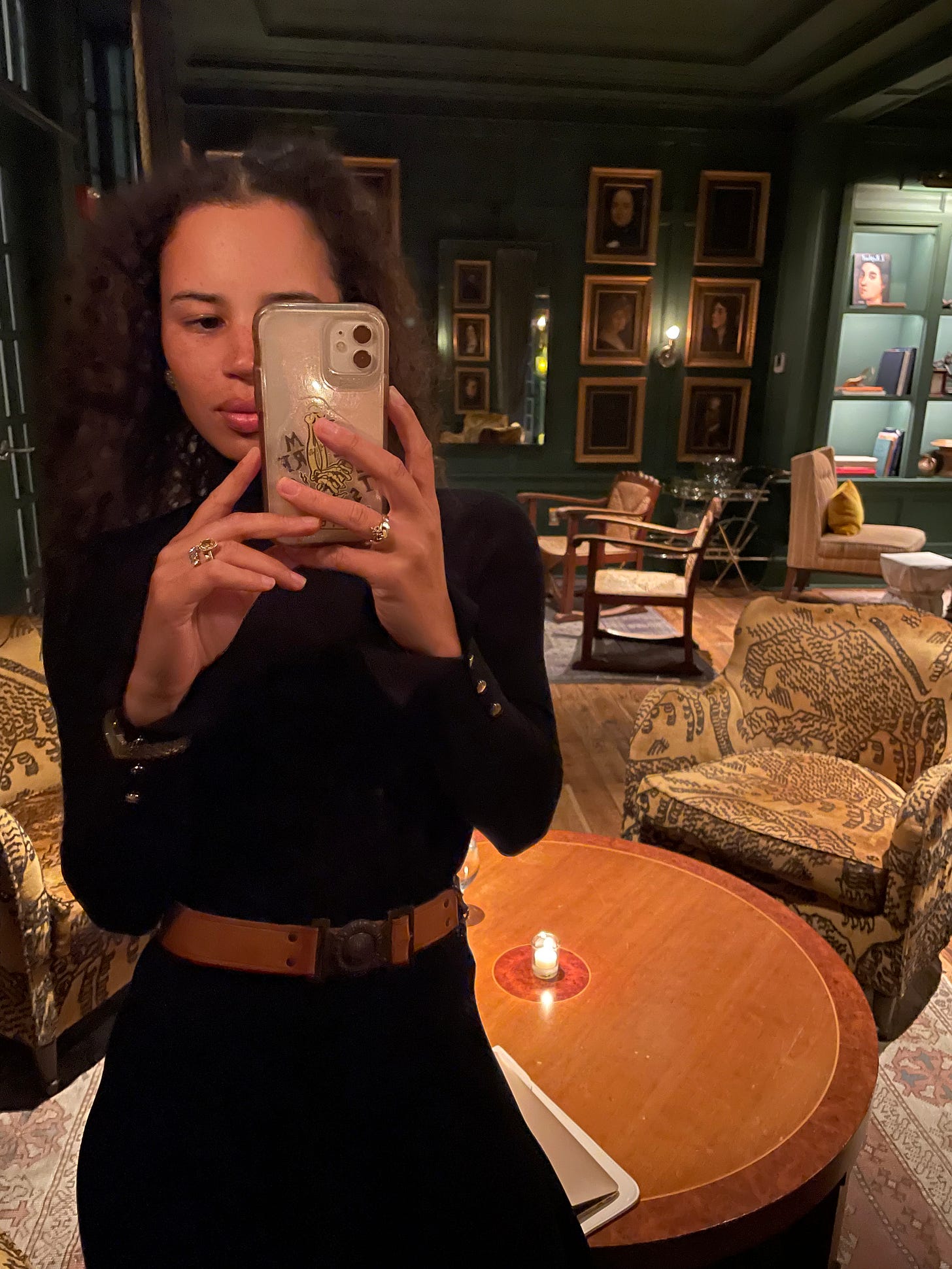
When Leslie mentions ‘house’ she is referring to 1 of the 11 properties that make up the Newport Mansions family, these are truly mansions. The Breakers, the largest jewel in the collection spans over 60k square feet of living area. (Go ahead, take a moment to pick your jaw up off the floor)
Rosecliff is one of the 11 Newport Mansions, built in 1902 for Nevada silver heiress Theresa Fair Oelrichs and remodeled, by Stanford White, for Oelrichs to resemble the Grand Trianon at Versailles.
Julian Kitchener-Fellowes is an actor, writer, director and conservative peer best known for his award winning historical dramas such as Gosford Park and Downton Abbey. Most recently he has been the creative energy behind HBO’s The Gilded Age.
Bellevue Avenue is the historic street that most of the Newport Mansions are scattered along, except the Breakers.
Jules Allard (1832 - 1907) was a Paris based Frenchman who ran one of the most notable interior design and furniture making firms from the 19th century. The Newport Mansions research team has shared some of their findings on Allard via digital and in-person events (See here for reference), if you’re interested in this sort of thing sign up for the Newport Mansions emails - they have some excellent digital events for those of us not based in Rhode Island.
Hunter House is quite different from the other Newport Mansions in that it is an example of Colonial architecture, built around 1748. During this time, Newport, as did much of America, depended on the work of enslaved people, and Leslie’s team has identified at least 13 enslaved individuals who lived and worked at Hunter House. Learn more here.
Lawyer and statesman, William Hunter served as a U.S. Senator and President Andrew Jackson’s charge d’affaires to Brazil. He lived at Hunter House with his wife, Mary Robinson, and the couple’s nine children. Over time, the family employed at least two free African-American women as domestic servants. The Hunters sold the house in the mid-1860s.
Joseph Wanton Jr. was a wealthy merchant and deputy governor who purchased Hunter House in 1757 he and his first wife, Abigail Honyman, and later second wife, Sarah Brenton, raised seven children at Hunter House. Wanton also enslaved at least six individuals on the property, including Toby, London, Cuffe, James, Bacchus and Hamor.
Between 1748 and 1754 Jonathon Nichols, a merchant and colonial deputy, constructed the north half of Hunter House. Nichols lived at Hunter House with his wife, Mary Lawton, eight children, and at least seven enslaved people, who are identified in Newport Mansions’ archival records as Phillis, Maud, Toby, Jo, Cambridge, Lucas and Dick.
Cheekwood is a 55 acre botanical garden and art museum located on the historic Cheek estate in Nashville, TN, the home was originally built by Lelsie and Mabel Cheek in 1929.
An American family who gained prominence during the Gilded Age after financial successes beginning with the shipping and railroad empires built by Cornelius Vanderbilt, after financial and social success the family expanded into various other areas of industry and philanthropy
(1871 - 1926) Née Tessie Fair, a new money silver heiress, married Hermann Oelrichs, an shipping magnate of Norddeutscher Lloyd which is still in business today as Hapag-Lloyd after a merger with a German shipping company in 1970.Leslie is referring to the novel, The Gilded Age: A Tale of Today, published in 1973 and authored by Mark Twain and Dudley Warner.
Leslie is referring to the novel, The Gilded Age: A Tale of Today, published in 1973 and authored by Mark Twain and Dudley Warner.
Garvan Carver was a Colonial craftsman we don’t know very much about, his pieces, like this Chippendale carved chair are some of the most sought after American decorative arts collectibles in the world and have sold at auction for over $1 million
Kirtley is currently the Curator of American Decorative Arts at the Philadelphia Museum of Art
(1853 - 1933) Née Alva Erskine Belmont, Alva was a multi-millionaire, socialite and women’s suffrage activist who built and owned Marble House. Alva is perhaps best remembered for forcing her daughter, Consuelo Vanderbilt, to marry Charles Spencer-Churchill, 9th Duke of Marlborough
Kingscote was originally built by George Noble Jones (1811 - 1876) who was a Southern plantation owner who built one of the early summer ‘cottages’ in Newport, RI.
(1802 - 1878) A British born, later American, architect who is well known for his Gothic Revival churches and popularization of the Italianate style. He was also the founder and first president of the American Institute of Architects.
You know these guys, iconic American architects who featured in our Art Apéritifs with John Marciari, they are responsible for much of the iconic architecture contemporary people find synonymous with Northeast American cities and well-to-do towns like Newport, RI.









